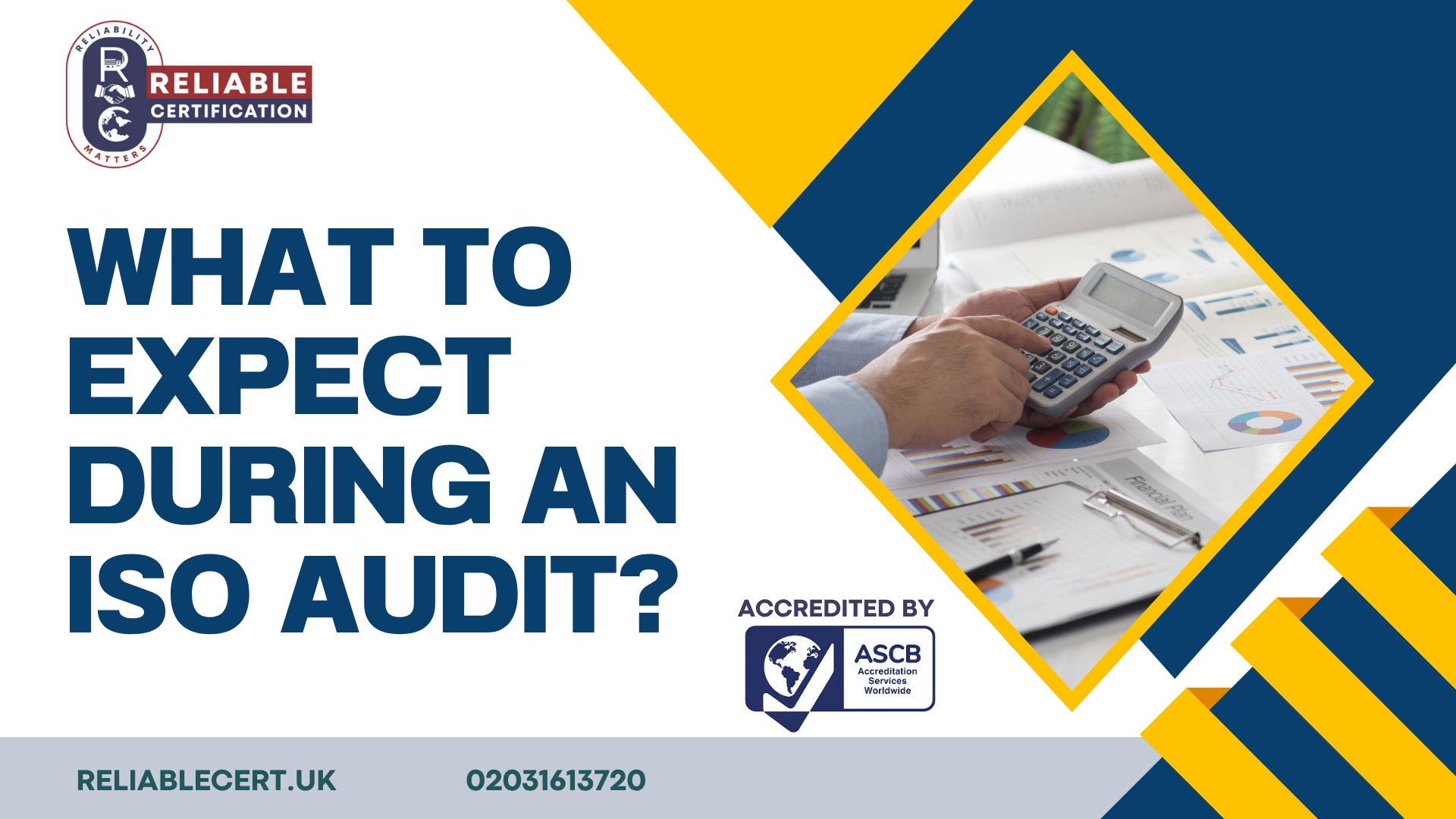Learn what happens during an ISO certification audit. Understand the process, key steps, and how to prepare for a successful ISO certification.

If your business is preparing for ISO certification, you’ve probably heard about the ISO audit, and you might be wondering what exactly that involves. The idea of being audited can feel intimidating, especially if it’s your first time. But don’t worry it’s not as scary as it sounds.
An ISO certification audit is simply a formal, structured process where a certification body (like ReliableCert) checks whether your management system meets the requirements of a specific ISO standard, such as ISO 9001, ISO 14001, ISO 27001, or ISO 45001.
In this article, we’ll walk you through what to expect before, during, and after the audit. Whether you're getting ISO certified for the first time or going through a surveillance audit, this guide will help you feel confident and prepared.
An ISO certification audit is a review of your organisation’s management system to ensure it complies with the selected ISO standard. It is conducted by a third-party ISO certification body and includes interviews, documentation checks, and observations of your processes.
Audits help verify that your systems are effective, well-documented, and implemented as required. The audit is not about catching mistakes, it’s about improving your operations and ensuring you're meeting global best practices.
Before diving into the process, it’s helpful to understand the different types of audits involved in ISO certification.
Preparation is key. Here's how you can set yourself up for success before the auditor arrives.
Make sure you and your team are familiar with the requirements of the specific ISO standard you're being audited for. Each standard has its focus, for example:
ISO 9001 – Quality Management
ISO 14001 – Environmental Management
ISO 27001 – Information Security
ISO 45001 – Occupational Health & Safety
ISO 22000 – Food Safety
ISO 50001 – Energy Management
ISO 13485 – Medical Devices
This step is like a practice run. It helps you spot and correct any issues before the official audit.
Top management should review audit results, customer feedback, non-conformities, and areas for improvement.
Make sure all required documents and records are up-to-date and easily accessible. These may include:
Let your team know when the audit is happening and what to expect. The auditor may interview them or observe their work.
Here’s a step-by-step breakdown of what typically happens during an ISO certification audit:
The auditor will start with an introduction, explain the agenda, and outline how the audit will proceed. This is also your chance to ask questions.
The auditor checks your documented procedures, policies, manuals, and other records to ensure they align with the ISO standard.
The auditor will visit various departments, observe activities, and conduct interviews with team members. They’ll be looking for evidence that your processes are being followed as described.
Rather than looking at everything, the auditor will use sampling to review documents and procedures. They’ll take notes on what’s working well and what needs improvement.
If something doesn’t meet the standard, the auditor will note it as a non-conformity. These can be:
You’ll be given a chance to respond and take corrective action.
At the end of the audit, the auditor will summarise their findings. You’ll get a clear explanation of any issues and the next steps.
Once the audit is complete, here’s what usually happens next:
You’ll receive a detailed audit report outlining the findings, non-conformities (if any), and recommendations.
If there are any non-conformities, you’ll be asked to submit a corrective action plan. This must show how you’ll fix the issue and prevent it from happening again.
If everything is in order (or once corrective actions are accepted), your ISO certification body will issue your certificate.
To maintain your ISO certification, your business will undergo regular surveillance audits—usually once a year. These are shorter audits focused on continued compliance and improvement.
During an ISO certification audit, auditors aren’t just checking for documents—they want to see that your systems are being followed, understood, and improved. They often look for:
Being honest and transparent during the audit builds trust and shows your commitment to quality and improvement.
An ISO certification audit might seem daunting at first, but with the right preparation and mindset, it becomes a valuable opportunity to improve your business.
From document reviews to interviews and observations, every step of the audit process is designed to ensure that your management system is not only compliant but also effective. With a Certification body by your side, you’ll have the support and guidance you need to navigate the audit with confidence.
Need help preparing for your next ISO certification audit?
Contact Reliable Certification today and speak to our team of experts who can guide you every step of the way
Typically replies within 30 minutes